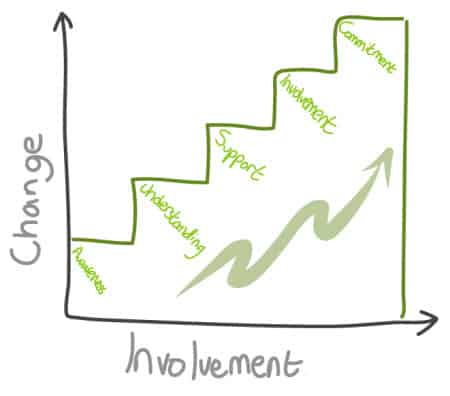Winning stakeholder support when time and energy are limited
This blog is reader-supported. When you purchase something through an affiliate link on this site, I may earn some coffee money. Thanks! Learn more.

Why should project teams invest resources in communication activities is a question I’m often asked – both from people who are not convinced of the value, and also from those looking for the words to use with their leadership team.
For me the crux of this question comes back to the raison d’etre for projects. It doesn’t matter whether we are introducing new systems, processes or skills; all projects are about changing the way people do their jobs. If we don’t persuade end users to change, our project will fail.
One of the fallacies I hear repeatedly is that people can be forced to change. They can’t. There are a multitude of subtle and overt ways people can undermine change that we are powerless to prevent when we do not invest in relationships and communication.
Magically, when we do invest in communications we can win support from the majority of our stakeholders. I use a simple model, developed by Bill Quirke, when I want to explain how to my clients.
The Communication Escalator
The Communication Escalator graphically depicts change communications as a rising staircase along which our stakeholders journey from initial awareness to commitment. Each step represents at least one communication activity.
At the bottom of the escalator the focus is on building cognitive knowledge, in the middle it is on developing positive emotions, and at the top it is on persuading people to take action that demonstrates their involvement.

Awareness
Communication activities at this first step are usually one-way flows of information so stakeholders understand the essentials about our change project as it affects them in their roles.
Understanding
At this second step, stakeholders receive additional information tailored more closely to their needs, including rationale, and we request feedback to check their level of understanding.
Support
At this third step, we seek to change our stakeholders’ attitudes so they are positive and supportive. We want them to accept the need for the change we are introducing, trust the rationale behind it, and potentially, accept the change itself.
Involvement
At this fourth step, we invite stakeholders to be involved in our project in some way, perhaps by providing input to decision-making, or participation in pilots.

Commitment
Here at the final step, our aim is to have stakeholders champion our project to others – to have them tell others about the benefits of our project to their tea and the organization. They may also be willing to defend us when other people criticize our project or achievements to date.
Not all our stakeholders will travel to the top of our escalator. How far they go depends on two criteria:
- How much power they have to influence the outcome of the project
- How much they will be impacted by the project.
Takeaway
Thus our communication resources are focused on those stakeholders who have the greater power and those who will be most impacted. This helps enormously in change teams that don’t have huge amounts of time and energy. What they do have can then be effectively focused on their key stakeholders.
Read next: The definitive guide to project sponsors
